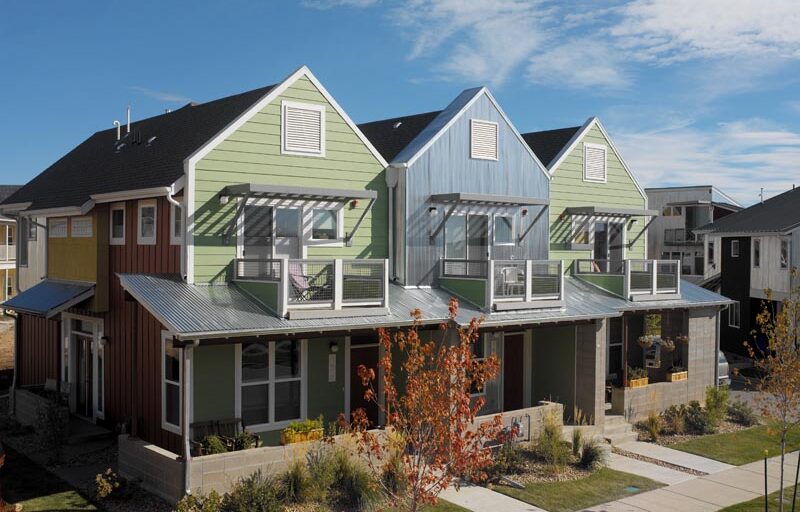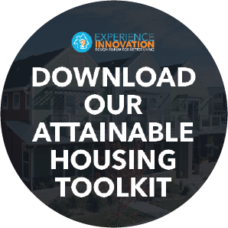Innovative Approaches to Attainability
This blog post was adapted from an article in the Colorado Real Estate Journal by DTJ Partner and Director of Architecture, Lee Payne, AIA, NCARB, LEED AP, and Senior Associate, Joseph Sammartino, AIA, NCARB, LEED AP.
The housing landscape in Colorado has reached a critical tipping point. As the population swells and development struggles to keep pace, finding affordable living options has become increasingly challenging across all income brackets. The solution isn’t just building more housing but reimagining how we approach community development entirely.
The Attainable Housing Toolkit
At the core of addressing this complex issue is our Attainable Housing Toolkit—a comprehensive framework prioritizing collaboration, innovation, and practical solutions. This framework recognizes that creating sustainable housing solutions requires coordinated efforts between city planners, developers, community advocates, and residents.
Success Stories in Action

Garden Crossing: Affordable Housing
Nestled within the Holiday master-planned community in Boulder, Garden Crossing represents a breakthrough in affordable housing integration. Built on reclaimed brownfield land, this development offers a mix of housing types that accommodate diverse lifestyle needs:
- Smart Density Solutions: Cleverly positioned residential units above detached parking structures push density above 20 units per acre without sacrificing quality of life. This innovative approach significantly lowered the overall cost per unit.
- Green Living by Design: Residents enjoy lower monthly expenses through thoughtfully implemented sustainability features, including solar power generation and high-efficiency Energy Star systems.
- Community Economic Impact: The diverse resident population strengthens the local economy, providing reliable customer bases for nearby businesses and generating consistent property tax revenue.

Stok on Welton: Urban Innovation
In Denver’s historic Five Points neighborhood, Stok on Welton demonstrates how urban housing can be both affordable and desirable. This mixed-use development transforms a modest half-acre lot into a vibrant community hub with 124 residential units:
- Vertical Opportunity: By building upward rather than outward, the project maximizes available space in an urban setting.
- Transit-First Design: Taking advantage of Denver’s updated zoning codes and nearby public transportation options, the development eliminated mandatory parking requirements while still incorporating convenience spaces.
- Climate-Forward Construction: The building features all-electric systems, on-site renewable energy, and carefully selected materials that minimize environmental impact.
- Adaptive Living Spaces: Residents enjoy flexible living arrangements through innovative space-saving, transformable Ori furniture systems that provide flexibility for changing needs throughout the day.
- Community-Building Amenities: From the rooftop wellness area to shared workspaces, the development prioritizes areas where residents can connect and collaborate.
Moving Forward Together
These projects illustrate how thoughtful implementation of attainability principles can produce housing that works for everyone. As Colorado continues growing, the housing sector must evolve beyond outdated development models.
Creating truly attainable communities requires us to embrace innovation, strengthen partnerships across sectors, and deeply understand the unique needs of each neighborhood. By implementing flexible regulations, exploring creative design solutions, and fostering meaningful collaboration, we can build communities where housing accessibility is the foundation rather than an afterthought.
The housing challenges facing Colorado aren’t going away—but with innovative approaches like these and our Attainable Housing Toolkit, we can create communities where people of all income levels can find their place.



 BACK TO BLOG
BACK TO BLOG